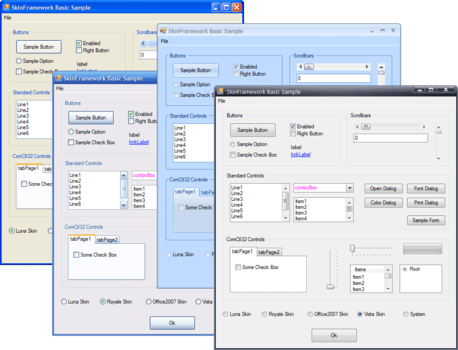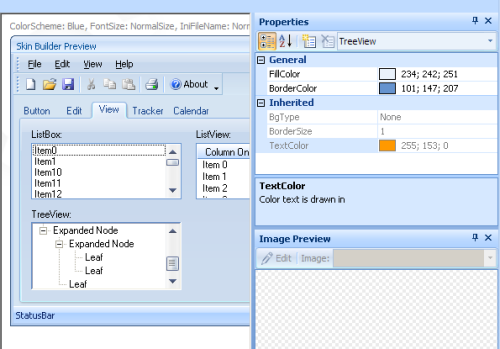
It is important to understand that a target machine where components should be registered may already have Codejock components of the same version registered. Typically this can be achieved by using %SystemRoot%\System32\regsvr32.exe tool executed as Administrator, for example using this command line for silent Calendar registration: OCX module must be registered during application installation. If a component is distributed along with the application every. Typically it can be found at the following location: %ProgramFiles(x86)%\Codejock Software\ActiveX\Xtreme SuitePro ActiveX v18.0.1\Bin\Registrator.exe
#CODEJOCK COMMANDBARS REGISTRATION#
Even after installing either SuitePro or a standalone ActiveX component on a development machine the necessary configurations must be registered prior to using the components.Ĭomponent registration on the development machine can be done using the Registrator tool included in the installation package.
#CODEJOCK COMMANDBARS LICENSE#
It is not enough to just copy component files to the target location to be able to use it, they must be registered and license included (described in the next section).
#CODEJOCK COMMANDBARS INSTALL#
It is important to install 32-bit Unicode components even if they are not used as Windows OS requires all 64-bit COM objects to have corresponding 32-bit components installed.Īlso three configurations may be installed in order to cover all possible use cases.Ĭomponents may be installed to any location that is at least read-only accessible for all potential users of the installed components. C# application with 圆4 or An圜PU TargetCPU, 64-bit Microsoft Office application or 64-bit C++ application with Unicode character set enabled. Using both 32-bit and 64-bit Unicode components if your application is a 64-bit application, e.g.

C# application with x86 TargetCPU, 32-bit Microsoft Office application or 32-bit C++ application with Unicode character set enabled Installing 32-bit Unicode components only if your application does support Unicode, e.g. Visual Basic 6 application or 32-bit C++ application with Multi-Byte character set enabled. Installing 32-bit ANSI components only if your application does not support Unicode, e.g.



It is important to choose the correct configuration that is compatible with your host application as Windows does not allow mixing the bitness of modules in one address space old programming languages do not support Unicode character set. It is assumed that a developer is familiar with ActiveX concepts and best practices related to a programming language of his choice.Įach Codejock ActiveX component comes in 3 configurations:Ĭomponent file names reflect its configuration, e.g.:Ĭ18.0.1.ocx - 32-bit ANSIĬ18.0.1.ocx - 32-bit UnicodeĬ.圆4.v18.0.1.ocx - 64-bit Unicode The way to work with ActiveX components and related language dependent concerns are beyond this article as it is unique to each programming language. The controls can be used from any development environment and with any programming language that supports ActiveX technology. One component (.OCX) file exposes a set of classes and interfaces necessary for using controls it provides. OCX files that must be copied and registered on the target computer where they will be used. Codejock ActiveX Controls Unicode v18.2.0Ĭodejock ActiveX components are standalone.


 0 kommentar(er)
0 kommentar(er)
